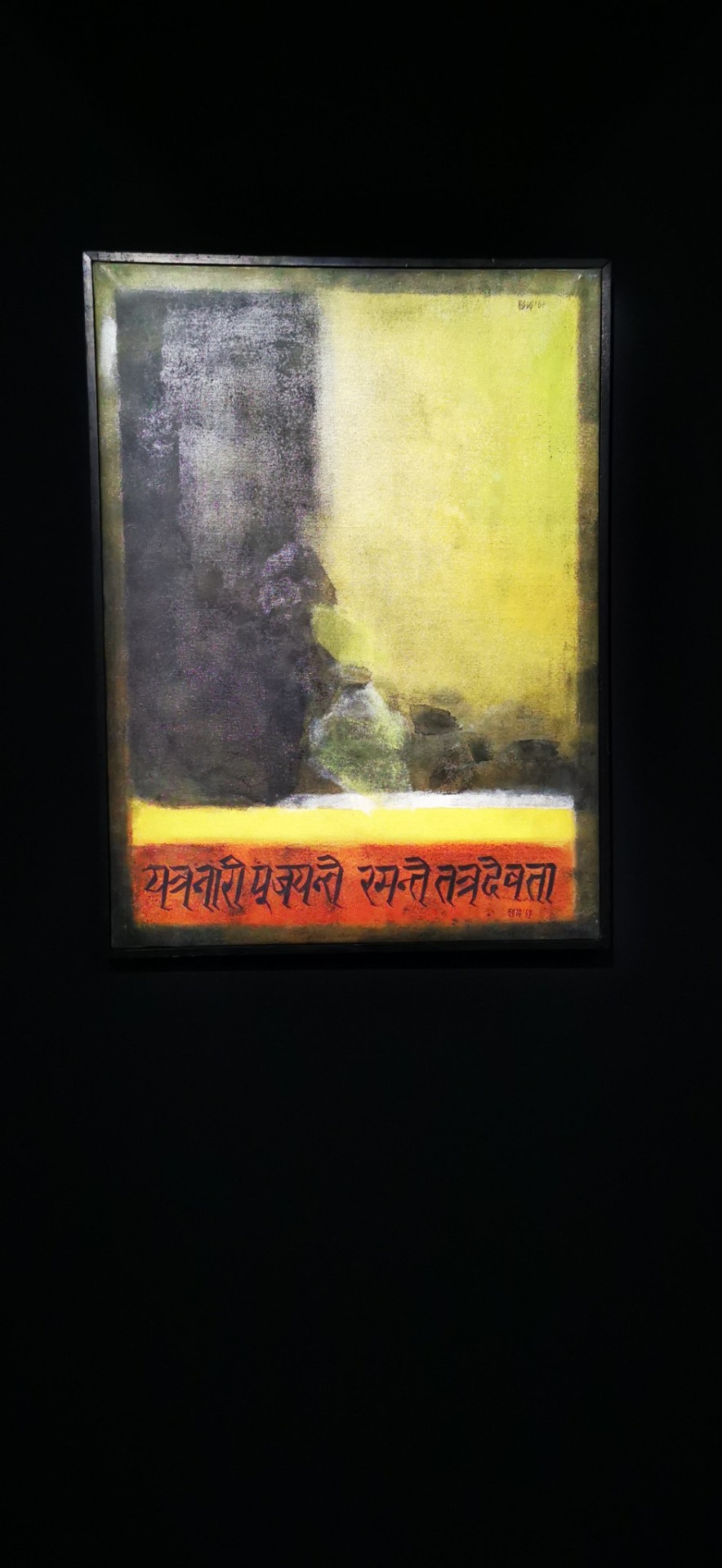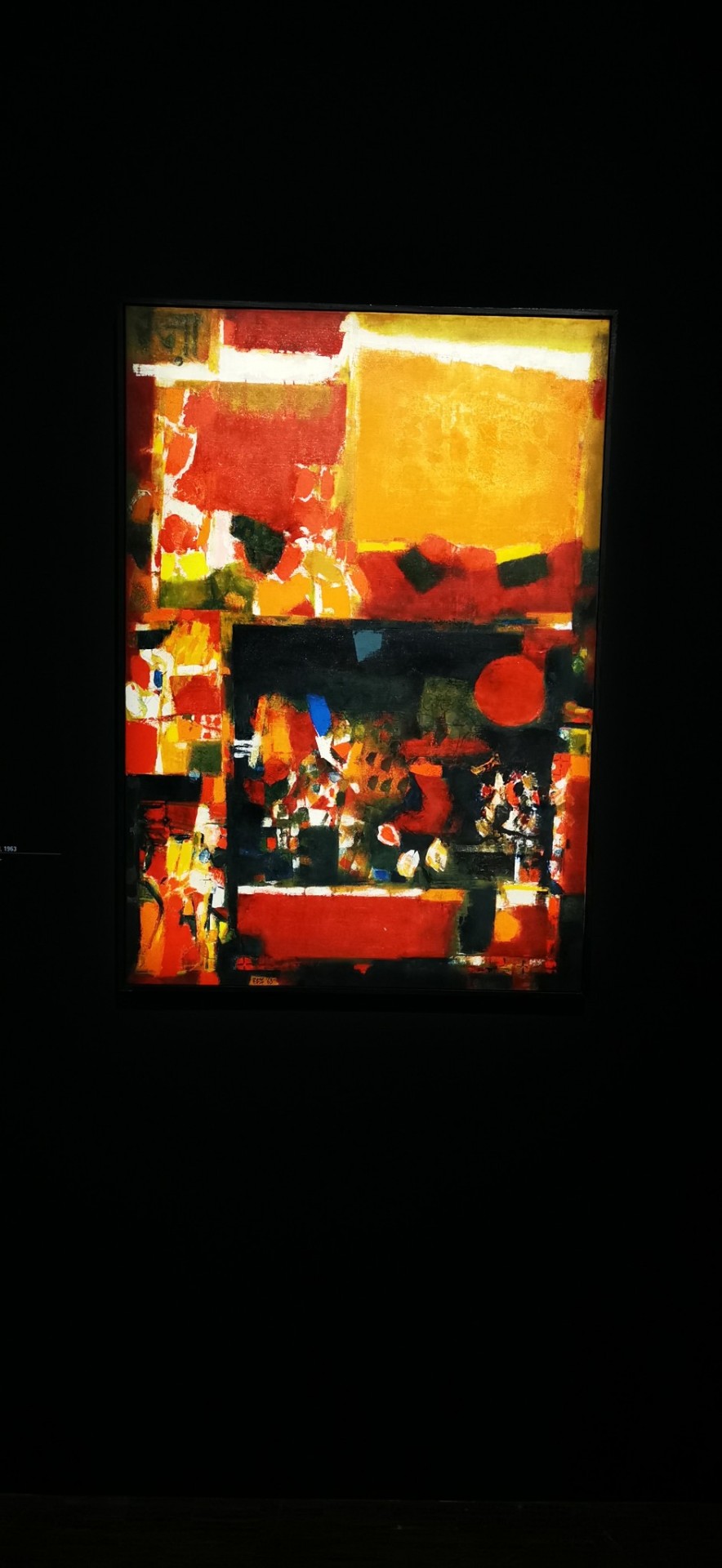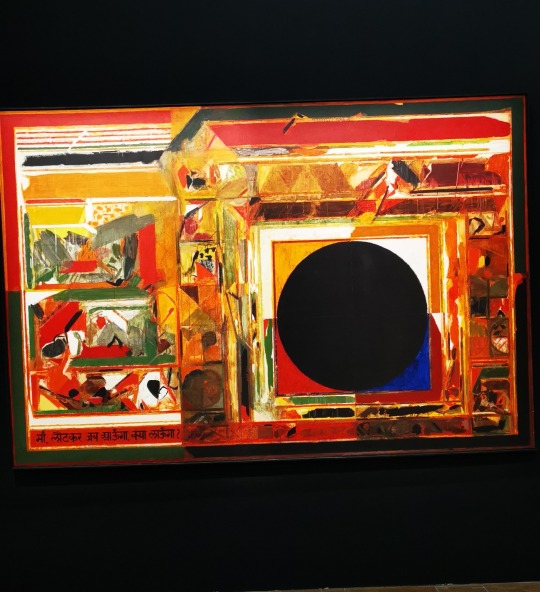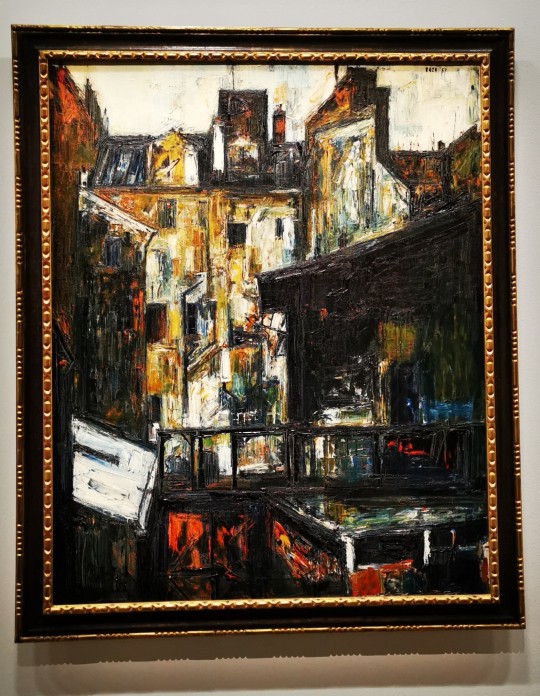#sayed haider raza
Explore tagged Tumblr posts
Text

Sayed Haider Raza (Indian, 1922–2016) - Bindu, acrylic on canvas, 40 x 40 cm (2013)
161 notes
·
View notes
Text

Sayed Haider Raza (Indian, 1922-2016), La Terre [Earth], 1985. Acrylic on canvas, 200 x 200 cm.
177 notes
·
View notes
Text

Sayed Haider Raza Terre chaude, 1966 Oil on canvas 23.6 x 23.7 in
165 notes
·
View notes
Photo

Sayed Haider Raza (Indian, 1922-2016), Composition, 1956. Oil on canvas, 65 x 46 cm
154 notes
·
View notes
Text

"Five Elements", Sayed Haider Raza, 2002. Acrylic on canvas.
65 notes
·
View notes
Text
-S.H. Raza, in Out of India
2 notes
·
View notes
Text
S. H. Raza: Limited Edition Serigraphs, Prints and Paintings

Collection of artist S H Raza painting Limited Edition Serigraphs, Signed prints, and Books. Available for sale at affordable prices.
For more details contact us at - 2nd Floor, Phoenix, Near Vijay Cross Roads, Navrangpura, Ahmedabad – 380 009. (INDIA), Tel: +91-9712979034 / 9712969034, Email: [email protected]
#S H Raza#Painting#Art#limited edition serigraphs#signed prints#books#S H Raza painting#Sayed Haider Raza#Archer India#Archer art gallery
3 notes
·
View notes
Text

Sayed Haider Raza bindu pancha tatava
22 notes
·
View notes
Text

'Polarité'. Sayed Haider Raza. 1994.
48 notes
·
View notes
Text

Sayed Haider Raza (Indian, 1922–2016) - Untitled, acrylic on canvas, 50 x 50 cm (1979)
198 notes
·
View notes
Text

Sayed Haider Raza (Indian, 1922-2016), Utapatti, 2011. Acrylic on canvas, 47 x 23 ¾ in.
460 notes
·
View notes
Text
Day at the Pompidou - amazing S. H. Raza



Sayed Haider Raza



32 notes
·
View notes
Text
Famous Painters

Famous painters are artists who have achieved widespread recognition and acclaim for their contributions to the world of art. They are known for their unique styles, innovative techniques, and profound impact on the art world. One of the defining characteristics of famous painters is their ability to capture the essence of their subjects in a way that resonates with viewers.
Whether painting portraits, landscapes, or abstract compositions, famous painters have a talent for evoking emotion, sparking imagination, and conveying complex ideas through their art. Famous painters often develop their own distinct styles. These styles can be characterized by their use of color, composition, brushwork, and subject matter, among other elements. In addition to their artistic talents, famous painters are also known for their influence on art movements and trends. Many famous painters have been at the forefront of important artistic movements, shaping the course of art history and inspiring future generations of artists. Famous painters are also celebrated for their contributions to art theory and criticism.
Through their writings, lectures, and interviews, famous painters often offer insights into their creative process, artistic philosophy, and views on the role of art in society. Overall, famous painters play a vital role in shaping the cultural landscape and enriching the human experience through their art.
Sayed Haider Raza LH was an Indian painter who lived and worked in France for most of his career. Born on 22 February 1922 in Kakkaiya, Central Provinces, British India, Raza moved to France in 1950. Amrita Sher-Gil's art was a journey through personal struggles and societal norms. Her works boldly conveyed deep emotions and the realities of her time. Raja Ravi Varma (29 April 1848 – 2 October 1906) was an Indian painter and artist. His works are one of the best examples of the fusion of European academic art with a purely Indian sensibility and iconography. Especially, he was notable for making affordable lithographs of his paintings available to the public, which greatly enhanced his reach and influence as a painter and public figure. Maqbool Fida Husain was an Indian artist known for executing bold, vibrantly coloured narrative paintings in a modified Cubist style. He was one of the most celebrated and internationally recognised Indian artists of the 20th century.
Qamar Ikram stands out as one of the most famous painters of his generation, renowned for his distinctive style, innovative techniques, and profound storytelling through art. One of the key elements that set Qamar Ikram apart as a famous painter is his ability to infuse traditional themes with a contemporary twist. This approach not only showcases his creativity but also highlights his deep understanding of cultural narratives and their relevance in today's world. In addition to his artistic talents, Qamar Ikram is also known for his storytelling abilities whether it's a mythological tale or a contemporary narrative, inviting viewers to immerse themselves in the world he has created. His ability to convey complex ideas and emotions through art is what sets him apart as a famous painter. Overall, Qamar Ikram's paintings are a testament to his talent, creativity, and vision as an artist.
#art#painting#artist#artwork#fineart#creative#modernart#illustration#artistic#creativeart#artlovers#artgallery#painte#originalartwork#artcommunity#artworld#artlover#visualart#creativelife#creativeartwork#creativeminds#creativespace#ApsaraArt#IndianArt#ApsaraPainting#IndianCulture#IndianArtist#DivineArt#ArtOfIndia
5 notes
·
View notes
Photo

Sayed Haider Raza. Indian, (1922-2016). JALASHAYA, 2000. Acrylic on canvas.
10 notes
·
View notes

